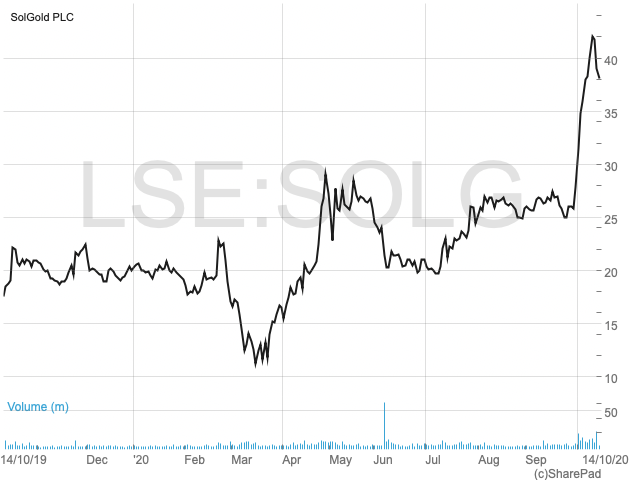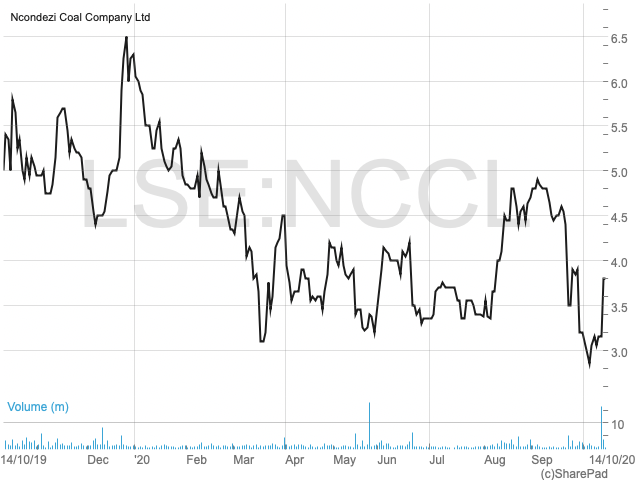John’s Mining Journal: The game’s afoot at Solgold

Veteran mining analyst John Cornford reviews some of the more interesting plays in the junior mining sector…
It certainly is not over yet for Solgold (LON:SOLG). Only the first shots have been fired in what is increasingly turning into a simmering pot (not exactly a ‘battle’ yet) where Solgold’s future is being stirred up – although it might take a bit longer, with a few more unexpected twists, than some observers expect.
Of the ammunition I expected Solgold to deploy, its first shot – initial drilling at Porvenir – the first three of twelve other promising prospects in the Ecuadorian Andes – looks like being spectacularly successful. Its first drill has intersected ‘visual copper mineralisation’ over 600m of a 750m planned depth, and has led Solgold to speculate that it has a “a large copper porphyry”, possibly bigger than Alpala and at shallower depth.
Porphyrys, although not necessarily high grade, are usually large enough to make them attractive to majors needing long life mines especially if they are at shallow depth. But in this case the initial grades – although not yet assayed – and their extent, look large as well.

So promising does Solgold think Porvenir to be, that it is hastily expanding its initial 8,000m drill programme to 50,000 metres, increasing to six drills as Covid restrictions allow, with at least one more by the end of October. And that will be in addition to restarting drilling at Blanca, only five miles from Alpala, where initial drilling encountered gold-bearing veins.
Also starting is an 8,000-metre initial drilling programme at Rio Amarillo, some 25 miles from Alpala. This has two ‘large-scale’ porphyry targets and has always been one of Solgold’s highest priorities – CEO Nick Mather stating his confidence that its ‘Tier one project at Alpala will be followed by Rio Amarillo’.
However, the fast expansion of these programmes might bring its own problem and perhaps open the way to one of the new twists, because to derive useful indications of their resources they will be expensive. For comparison, Solgold planned to drill 120,000 metres at Alpala in 2018 alone with 12 rigs – after 70,500 metres was drilled in 2017 at a cost of initially $1,100/m which reduced to $500/m as drilling progressed.
So, whereas only recently Solgold was reassuring investors that – following its c. $40 million fund raise (at 21.5p) in June, and the $100m advanced by Franco Nevada to complete the Alpala Feasibility study – it had sufficient funds to last until end-2021, that might come into question. In its latest management report only a month ago but before announcing its expanded programme, Solgold said it was planning to have spent only $27m on regional exploration in the year to end-June next year.
So, as ever in early stage mining, and barring any other developments, 2021 will see a race for these forthcoming drill results to keep the shares ahead of fundraising fears.
As for other developments, they could be many. For a start, as I write Cornerstone’s shares at $6 Canadian dollars with a 1.71 C$/£ exchange rate are well below the value of Solgold’s bid – due for acceptance by Oct 14th – indicating that Cornerstone’s management will persuade shareholders to reject it. That can only be because they have some dastardly plan to foil Solgold’s attempt to unblock its hold on 15% of Alpala, and perhaps to call the EGM it has threatened to do in order to oust Solgold’s present management. Alternatively, the market is expecting Cornerstone to sell itself more dearly to someone wanting those Alpala and Solgold holdings.
Other developments mooted are of some sort of concerted bid for Solgold by BHP once free of the lock on its doing so after October 15th.
I don’t have any clearer crystal ball than anyone else, so all I can say is keep watching – although it might be for longer than investors expect.
In the dangerous investing world of major engineering projects, particularly of power stations whether fuelled by coal, oil, or gas, I see that Oracle Power (LON:ORCP), which in April I advised avoiding has, as I forecast, seen its shares go nowhere after the initial speculative spikes usual for these businesses.

I keep writing about them in order to point out their dangers for investors who assume their vast cost will somehow rub off on them. It usually takes time, but Oracle’s shares are now settling down to the usual pattern as impatient punters notice the snags and leave, despite its recent announcement of yet more, eye-wateringly large, ambitions to capitalise on its lease of part of Pakistan’s Thar coal field.
An announcement such as its latest “implementation plan for Thar – as an industrial park, centred around the development of a large mine, along with a mine mouth power plant, a coal gasification (urea/fertiliser) and coal-to-liquids plant – laying the foundations for our Company becoming an international natural resources and power developer” has not seen the previous, usual, ‘we’re going to be in the money’ share spike.
Which is just as well, because I can’t imagine a scheme more guaranteed to create a vast number of new Oracle shares before there is even a whiff of whatever value the cash they raise will create; when it will deliver it to shareholders; and how many shares there will be to divide it among.
But even Oracle’s warning in early July that it had signed up for a £45m equity funding facility (more than three times its current market cap) at some unknown future price – ‘in order to support future project expenditure’ – did not put off some buyers. Another announcement a few weeks later however, that its ambitions now also encompass a mining project in Africa, looked finally to have caused investors to notice all the red flags.
Meanwhile, the only one of these sorts of companies to have protected shareholders by concentrating on just one project, Ncondezi Power (LON:NCCL), is nearing the crucial stage (which the others won’t reach for at least another 2-3 years) when they can give shareholders most of the information to value their shares. Just one broker (not the company’s) has made a stab at this – Canaccord – and, unlike most mining and project companies I have followed over the years, I actually agree that its ‘target’ price of 13p is close to where I think the shares will trade when that happens.
Like all such companies however, NCCL has not been immune to the normal hazards which arise during the long period of planning projects. Its shares have hardly recovered from the recent announcement by General Electric that it would withdraw from its world-wide coal fired power station business, raising doubts that its commitment to supply Ncondezi would be affected. But it takes a long time to unwind such businesses (and there must be Chinese companies eager to snap them up) so that NCCL has apparently been reassured that its project is not at risk.
With its shares thinly traded, and numbers of announcements expected in the near term, the shares look cheap.


Comments (0)